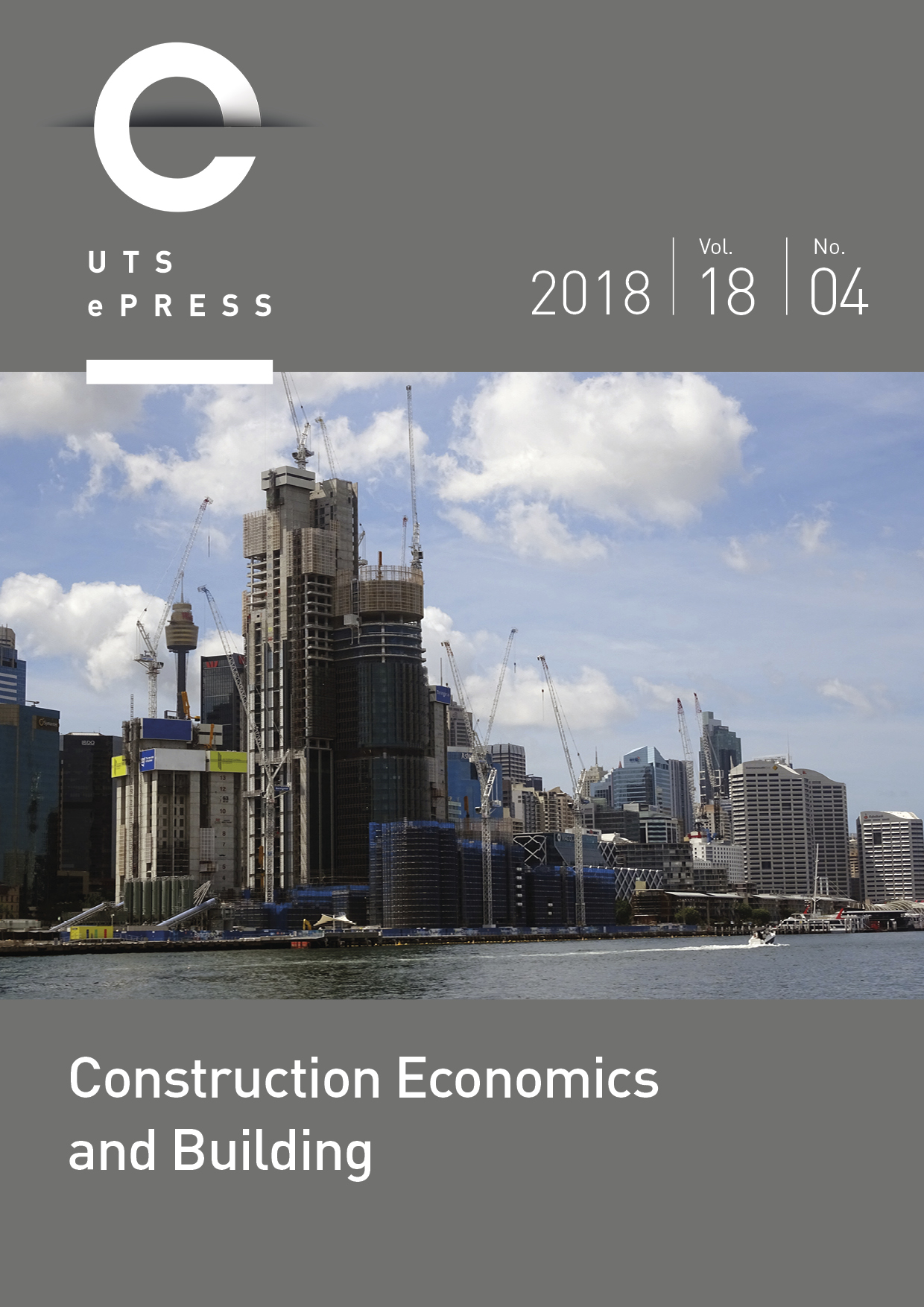Embodied Carbon and Construction Cost Differences between Hong Kong and Melbourne Buildings
Main Article Content
Abstract
Limiting the amount of embodied carbon in buildings can help minimize the damaging impacts of global warming through lower upstream emission of CO2. This study empirically investigates the embodied carbon footprint of new-build and refurbished buildings in both Hong Kong and Melbourne to determine the embodied carbon profile and its relationship to both embodied energy and construction cost. The Hong Kong findings suggest that mean embodied carbon for refurbished buildings is 33-39% lower than new-build projects, and the cost for refurbished buildings is 22-50% lower than new-build projects (per square metre of floor area). The Melbourne findings, however, suggest that mean embodied carbon for refurbished buildings is 4% lower than new-build projects, and the cost for refurbished buildings is 24% higher than new-build projects (per square metre of floor area). Embodied carbon ranges from 645-1,059 kgCO2e/m2 for new-build and 294-655 kgCO2e/m2 for refurbished projects in Hong Kong, and 1,138-1,705 kgCO2e/m2 for new-build and 900-1,681 kgCO2e/m2 for refurbished projects in Melbourne. The reasons behind these locational discrepancies are explored and critiqued. Overall, a very strong linear relationship between embodied energy and construction cost in both cities was found and can be used to predict the former, given the latter.
Article Details
Section
Authors who publish with this journal agree to the following terms:
a) Authors retain copyright and grant the journal right of first publication with the work simultaneously licensed under a Creative Commons Attribution License that allows others to share and adapt the work with an acknowledgement of the work's authorship and initial publication in this journal.
b) Authors are able to enter into separate, additional contractual arrangements for the non-exclusive distribution of the journal's published version of the work (e.g., post it to an institutional repository or publish it in a book), with an acknowledgement of its initial publication in this journal.
c) Authors are permitted and encouraged to post their work online (e.g., in institutional repositories or on their website) prior to and during the submission process, as it can lead to productive exchanges, as well as earlier and greater citation of published work (See The Open Access Citation Advantage Service). Where authors include such a work in an institutional repository or on their website (ie. a copy of a work which has been published in a UTS ePRESS journal, or a pre-print or post-print version of that work), we request that they include a statement that acknowledges the UTS ePRESS publication including the name of the journal, the volume number and a web-link to the journal item.
d) Authors should be aware that the Creative Commons Attribution (CC-BY) License permits readers to share (copy and redistribute the work in any medium or format) and adapt (remix, transform, and build upon the work) for any purpose, even commercially, provided they also give appropriate credit to the work, provide a link to the license, and indicate if changes were made. They may do these things in any reasonable manner, but not in any way that suggests you or your publisher endorses their use.
